Day 7 (January 30, 2019)
Niiya, Tokushima → Kyōbashira Pass → Ōsugi, Kōchi

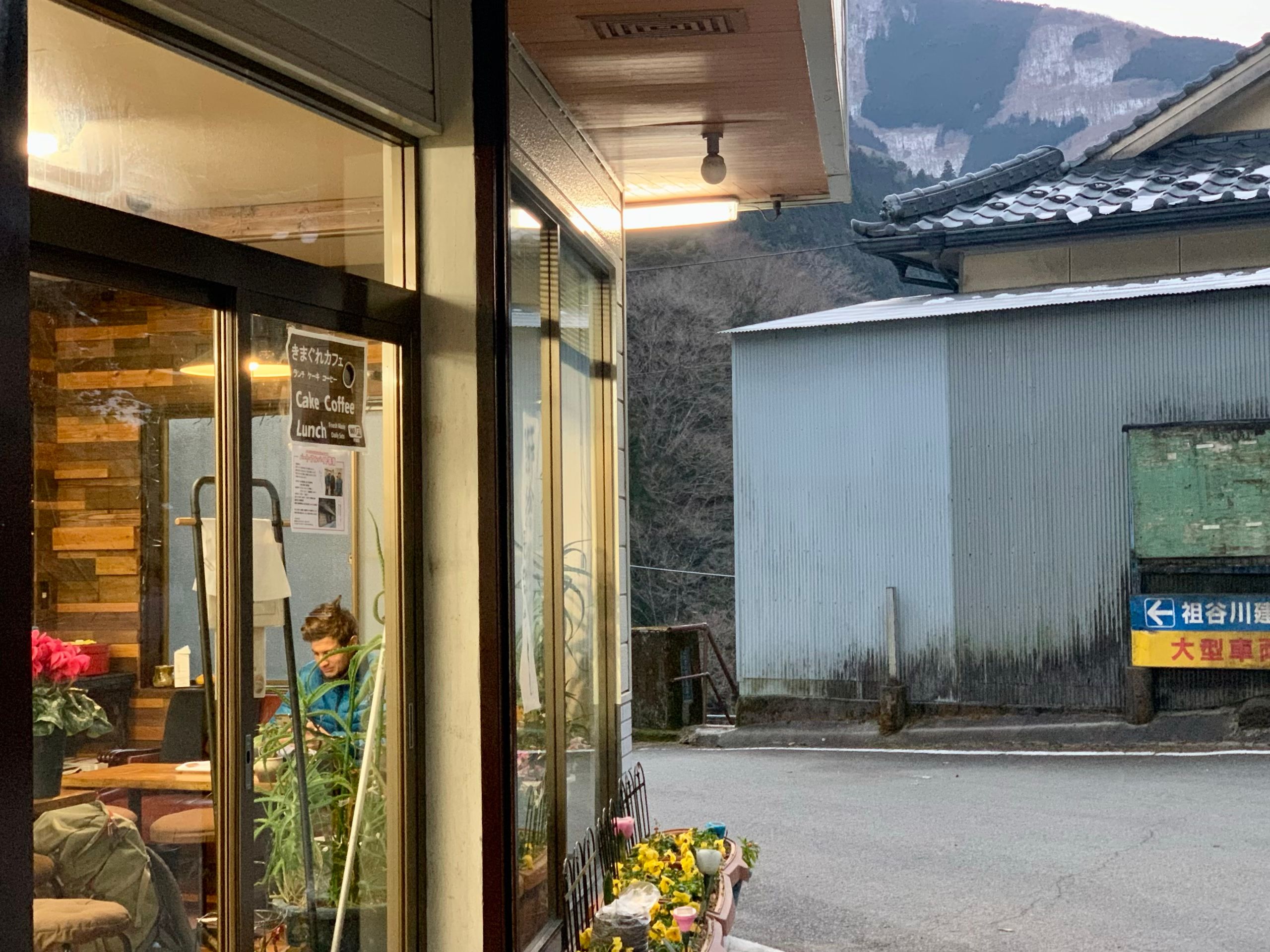
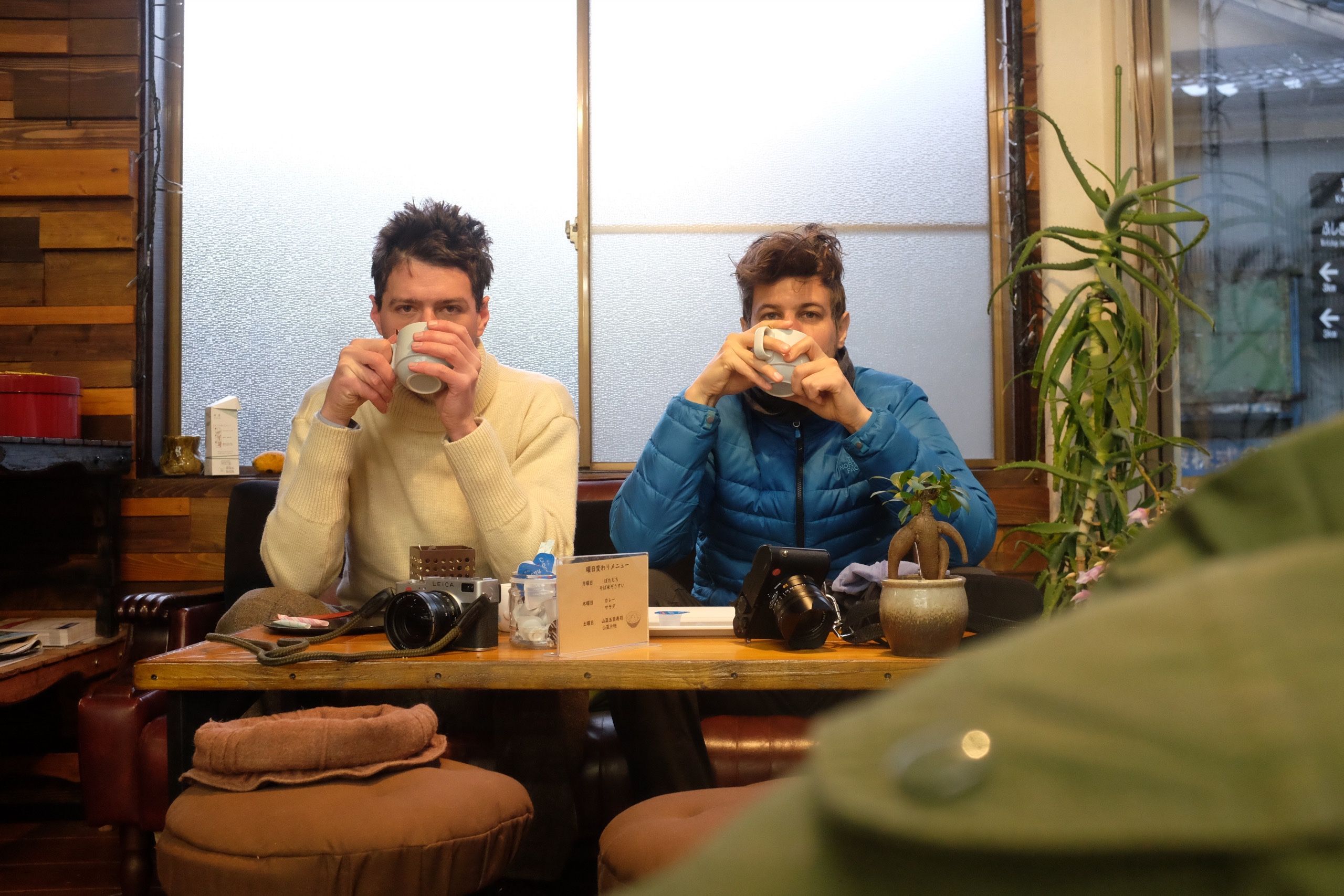
On our last morning together, after a night spent in a house full of trash and unopened packages of adult diapers, Gyula found the most unusual business establishment in Japan: a coffee shop open at seven in the morning in the deep countryside. It may have been little more than a table in the corner of a village store, and the coffee machine may have been broken, so what we got was instant coffee, but it was coffee, and it was hot, and I think it may even have been slightly above freezing inside the store. We shouldered our rucksacks for the last time, and began climbing towards the Kyōbashira Pass and out of Tokushima.

The past was still here — it just wasn’t very evenly distributed.
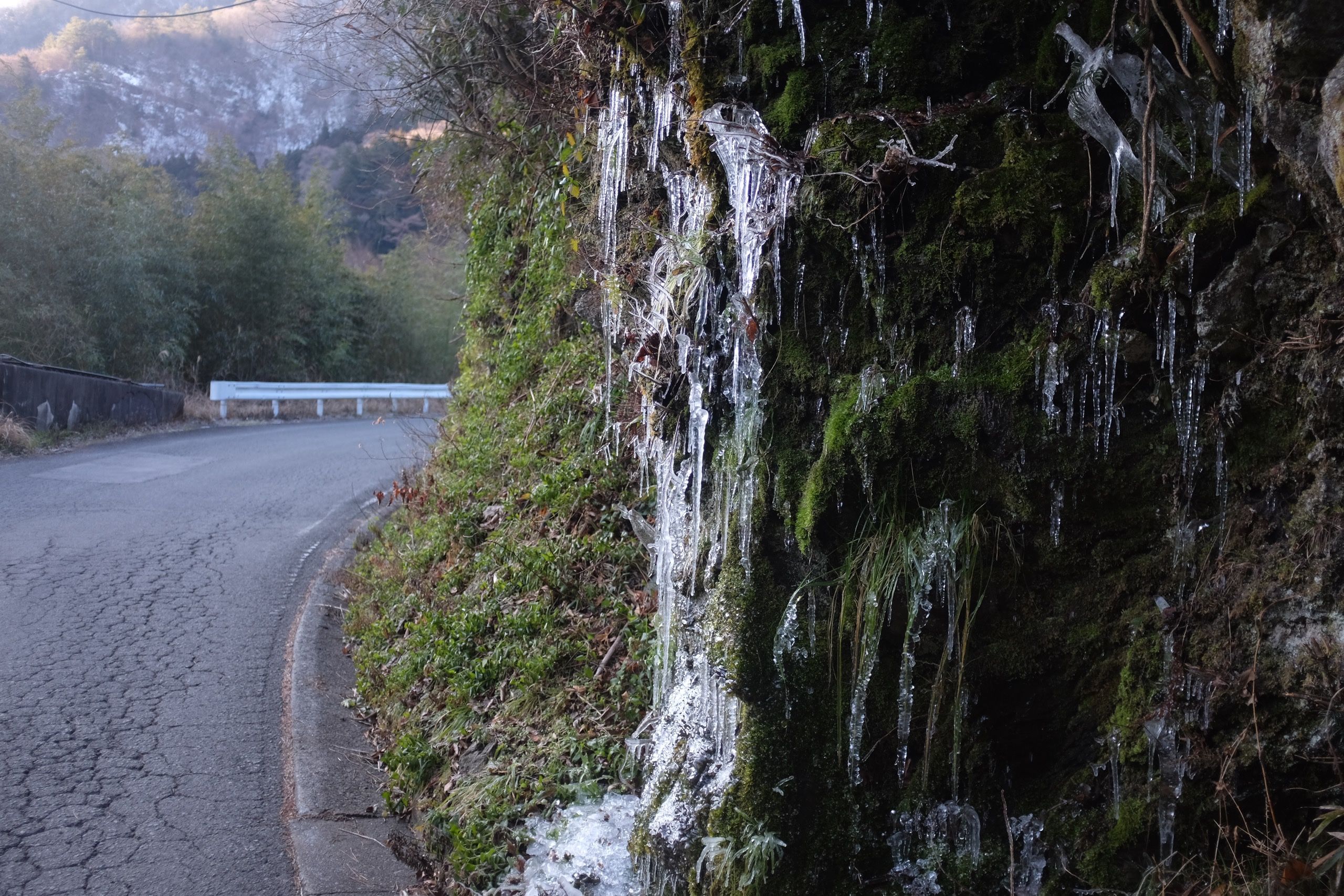
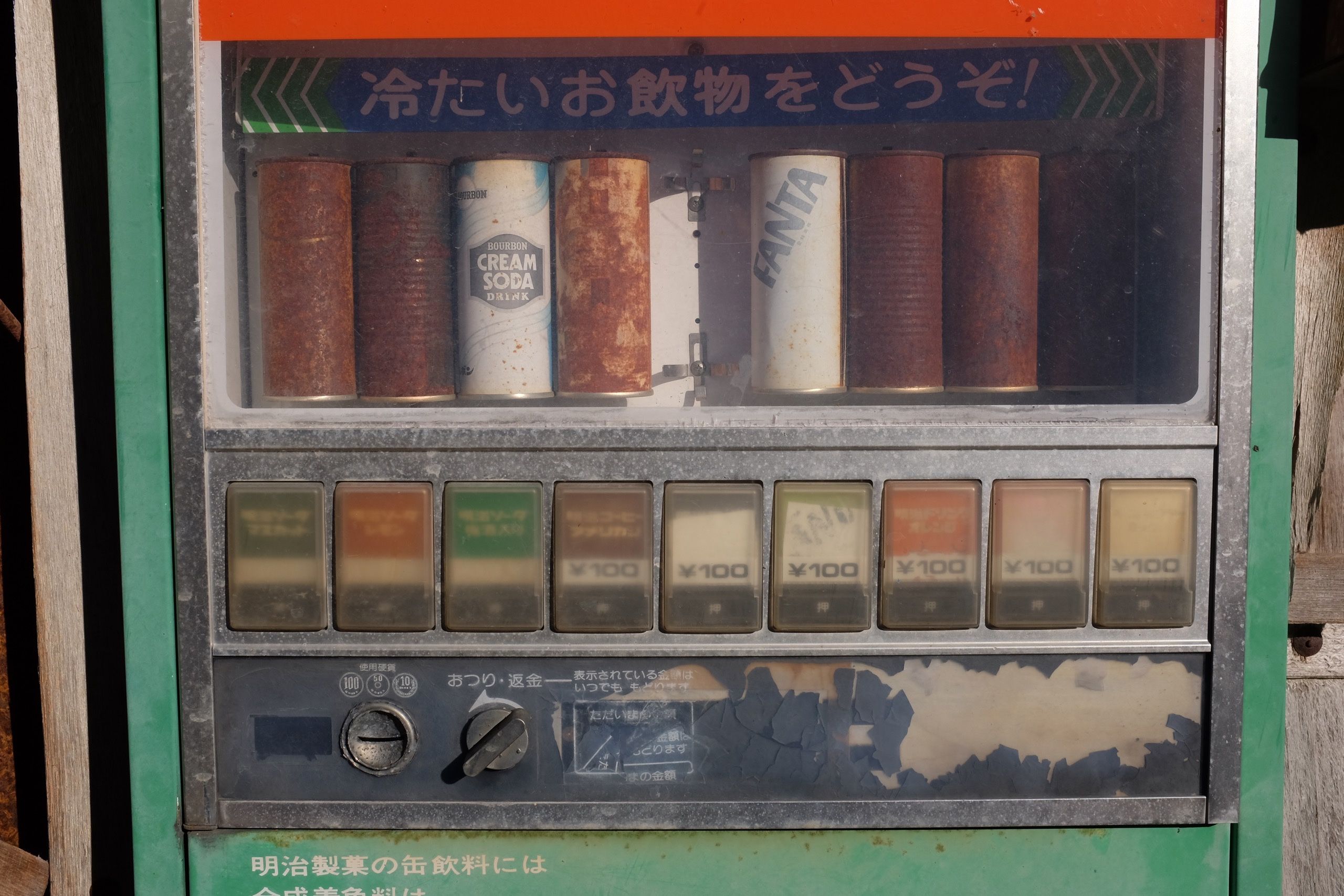

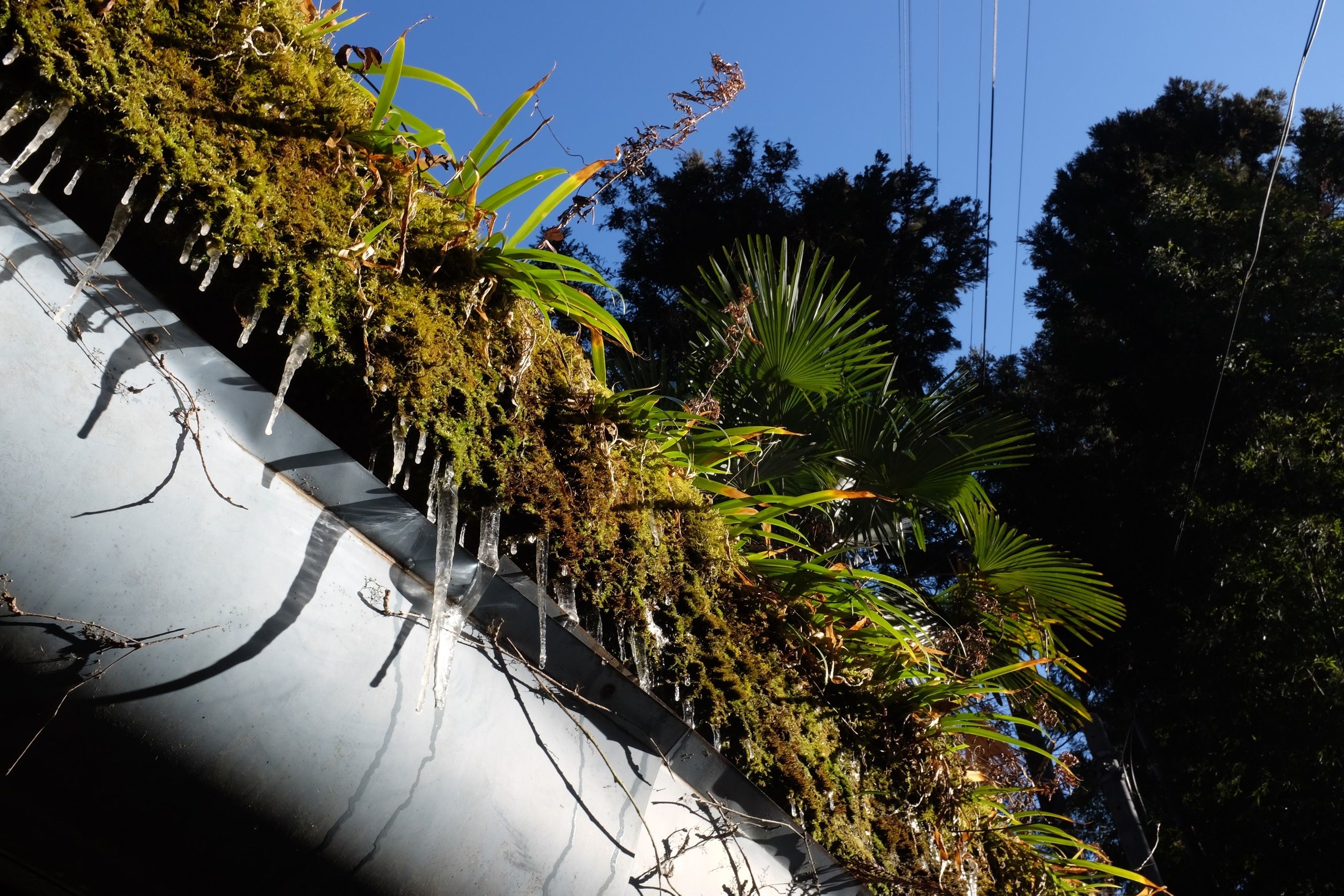

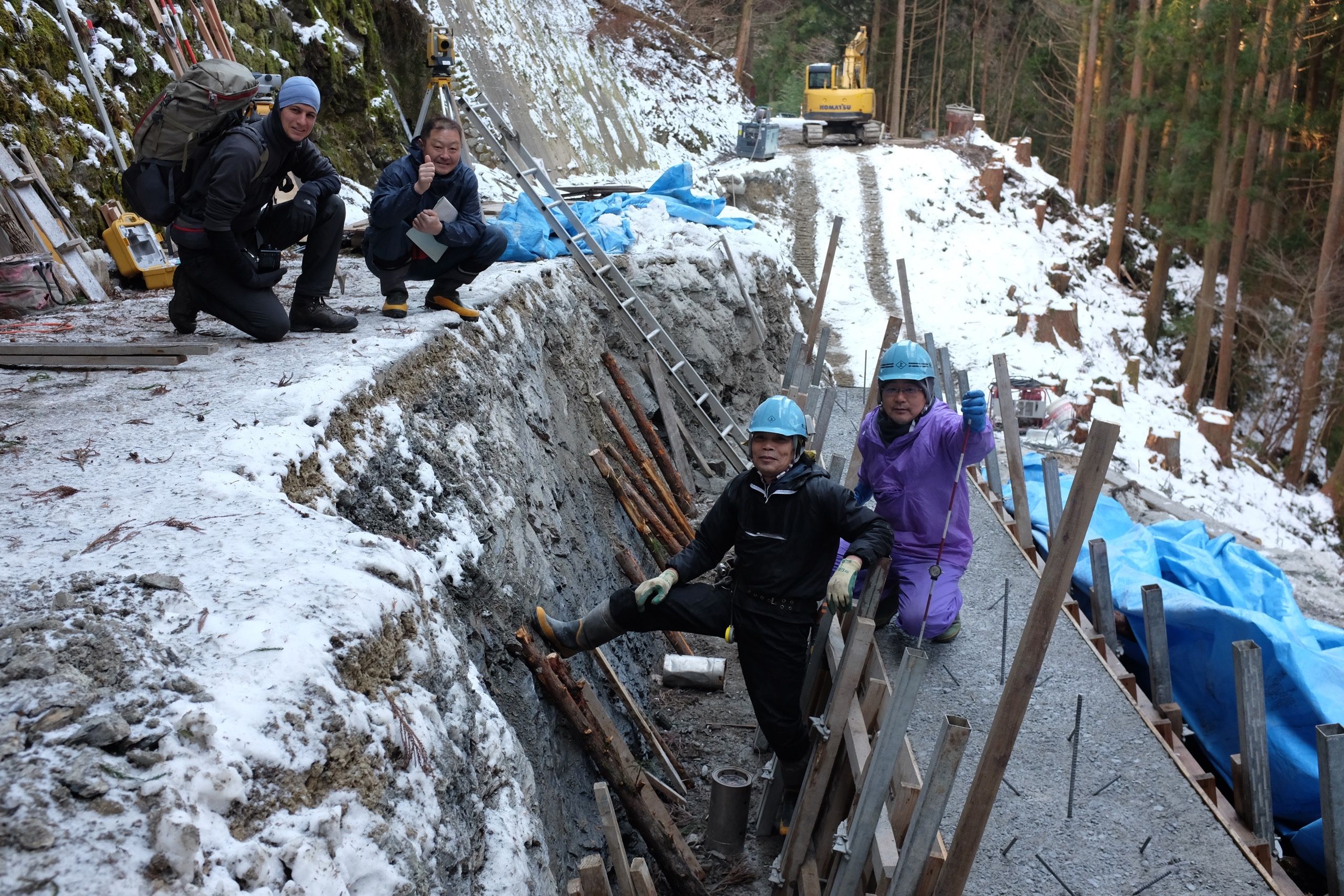

As the road twisted towards the pass the landscape gained a splendor that was almost Central Asian in its scale and composition, the snow pyramid of Mount Tenguzuka rising across the valley against a spotless blue sky. The mountain villages clung to the steep hillsides then fell away, and soon we were walking in ice, in silence, bathed and blessed by a golden light.
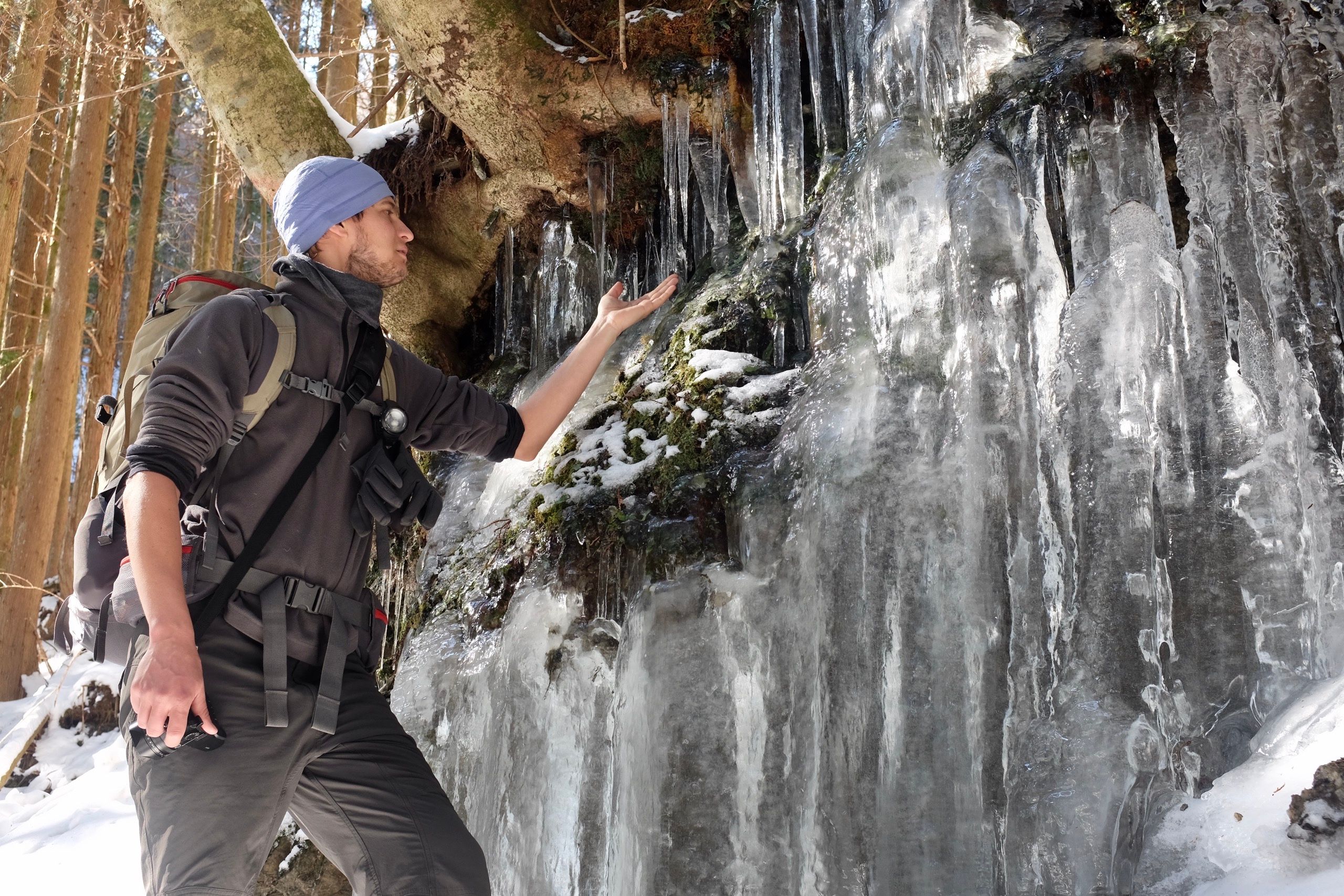
When members of the 2019 Hungarian Tokushima reconnaissance expedition came across the feature in the winter landscape they would later dub the Simonyi Icefall, they paused in their walk to take photos of each other with their expensive-looking cameras. They would later upload these, at vastly reduced resolution, to their social media accounts, to be swallowed in a matter of hours by algorithms inscrutable, cruel, and inhuman.

There are quite a few species of alder in Japan, their catkins black constellations in a chalk-blue mountain sky.
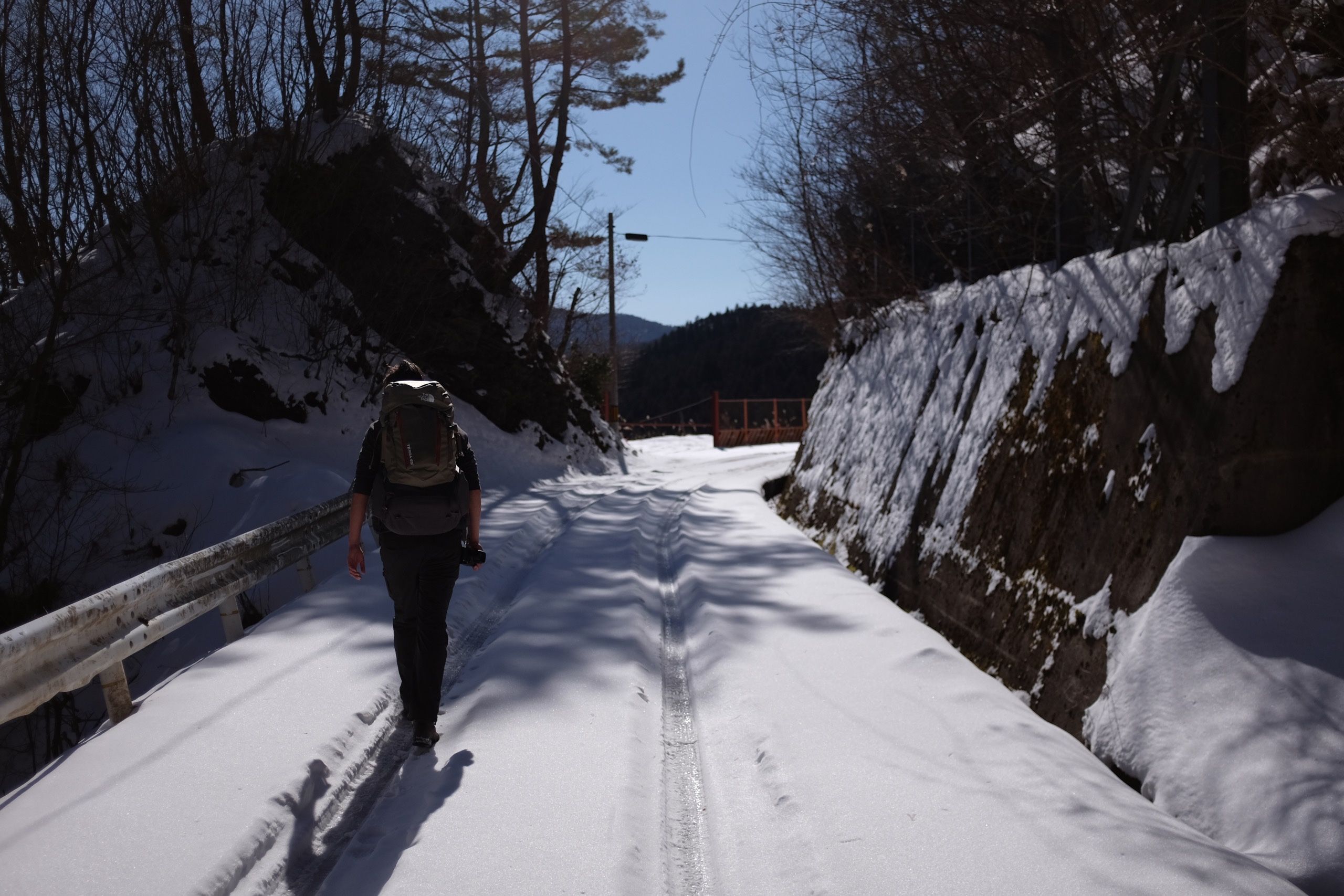
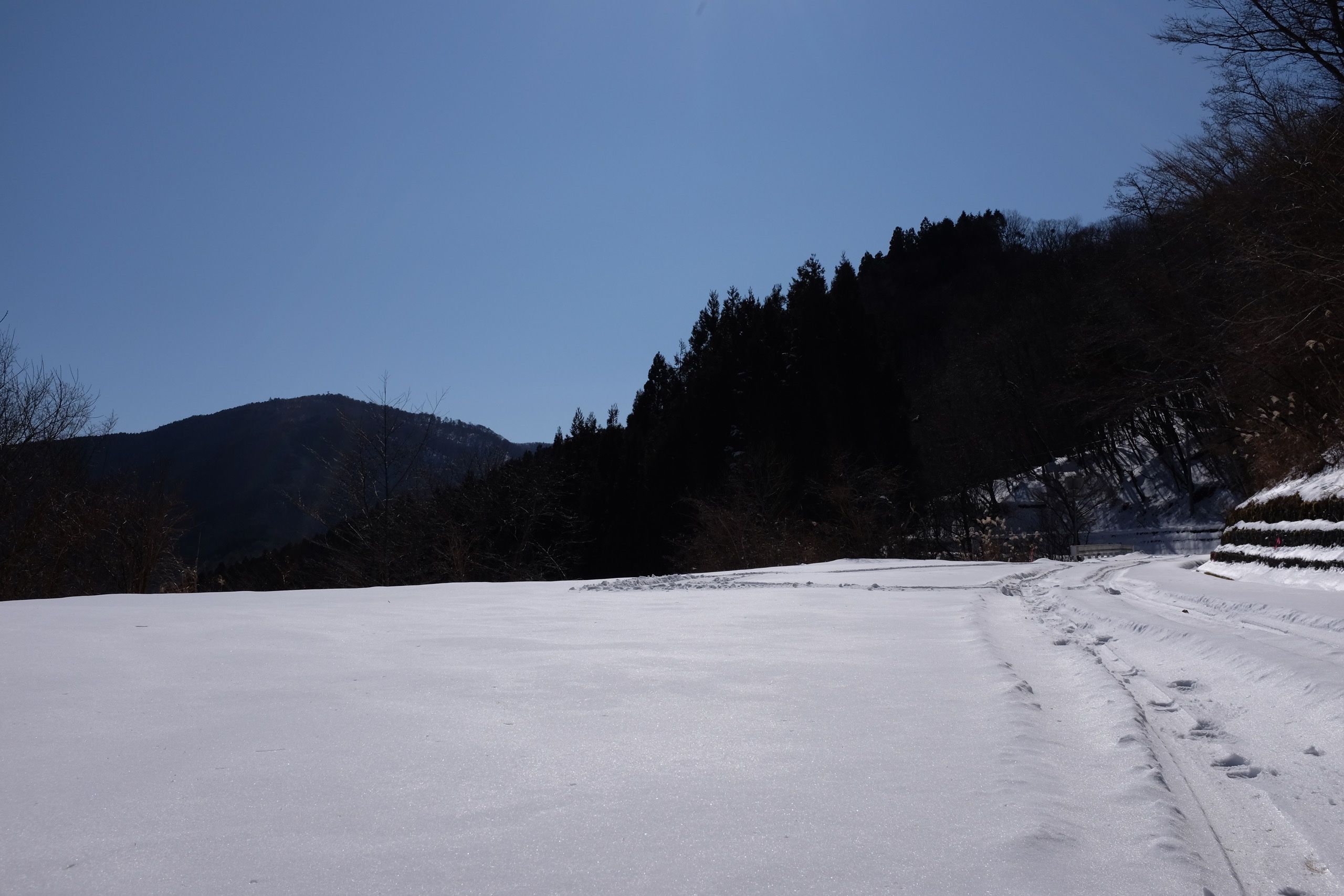
In the glorious Kaiserwetter, 1,133 meters above the sea whose sands we had walked five days before, we walked out of Tokushima, and into the warm, sunlit valleys of Kōchi. Our frozen and strange rooms were behind us now, and so was our constant hunger and our shared solitude. We looked back on the snow peaks of Tokushima for the last time, and already we missed the great gift of our days in their valleys and across their saddles, days pared down to the bone and the sinew.

Along the 5,000 or so kilometers I have walked on Japan’s back roads I’ve come across two bears, and about a thousand times their mass in signs warning against bears. This is one of the latter.
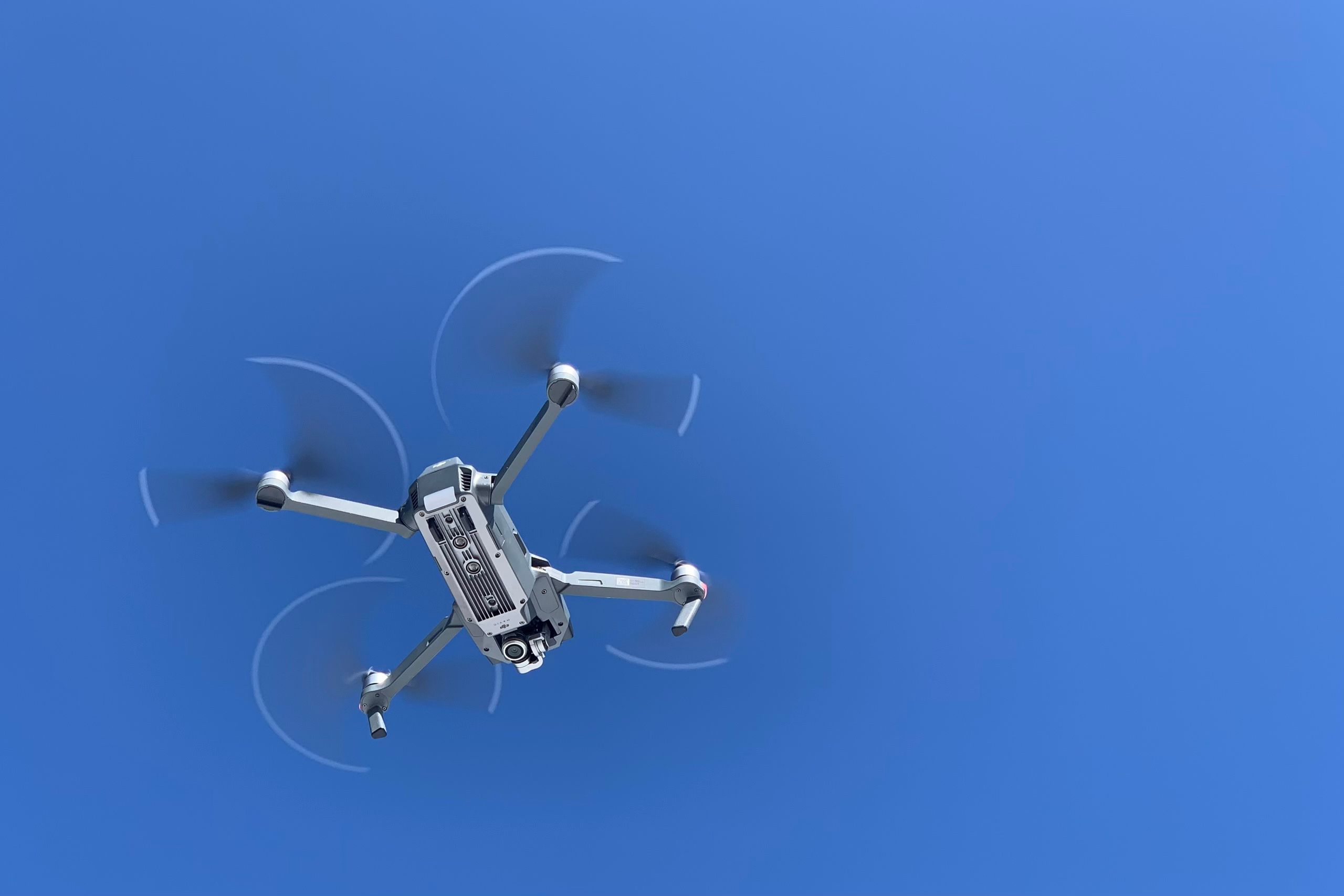
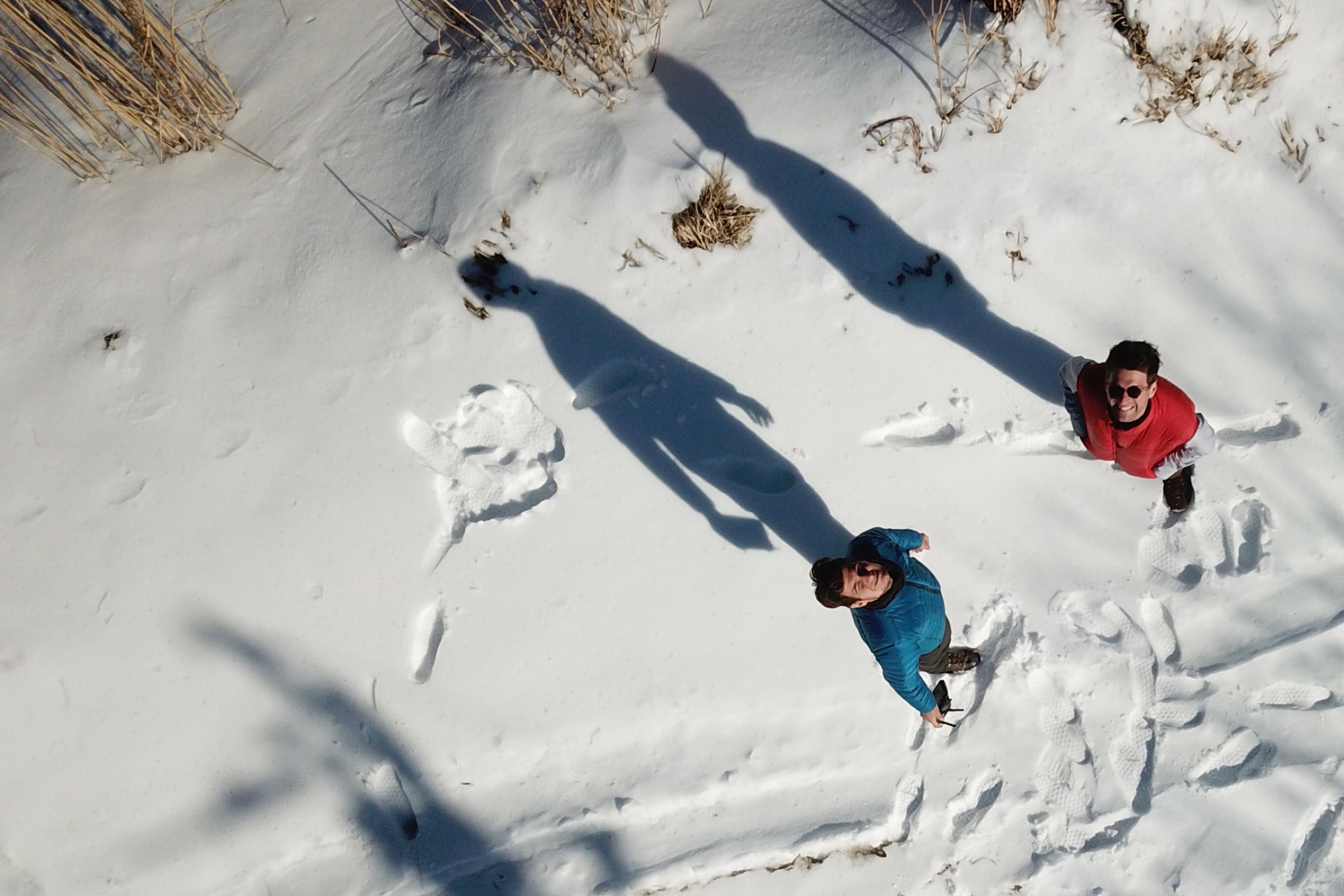
These aren’t high mountains by any means, and Iya isn’t the Hunza or the Wakhan. Their gentle ridges and grassy meadows gain their unsettling, transformative magic through the snow and the ice and the cold winter skies, which imbue them with the power to strip the warm skin and the beating heart from a person and turn her into a transcendental spirit, a nonchalant afternoon glow, and, conversely, the power to give presence and flesh to the spirits. I think of the snow pyramid of Mount Tenguzuke now, and its power to conjure the mountains of the mind, mountains whose snows and ice are eternal, Minya Konka and Muztagh Tower and Parinacota, and just what power they must have over body and soul if these gentle, grassy, frozen Japanese peaks make you half mad and burning with life.
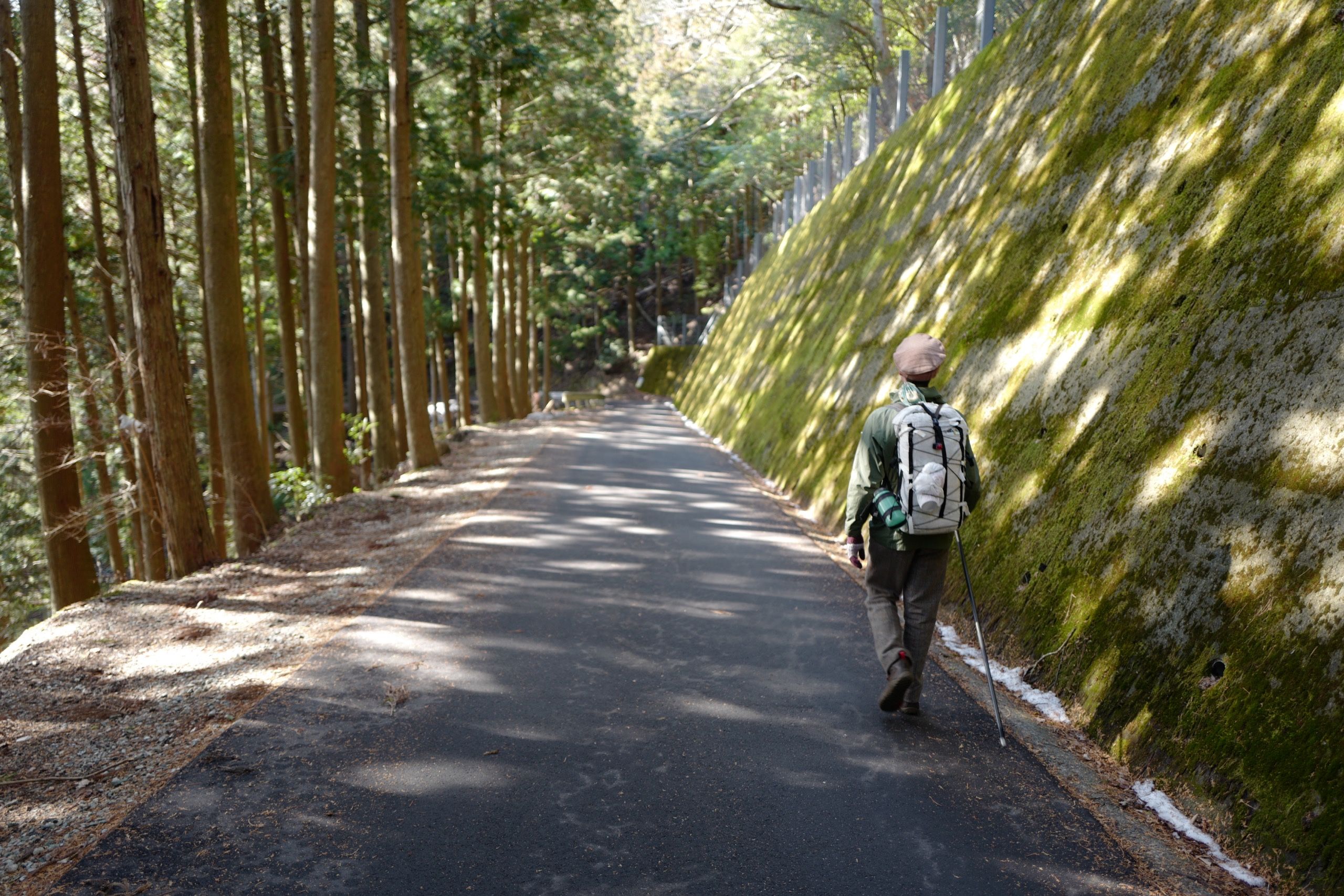
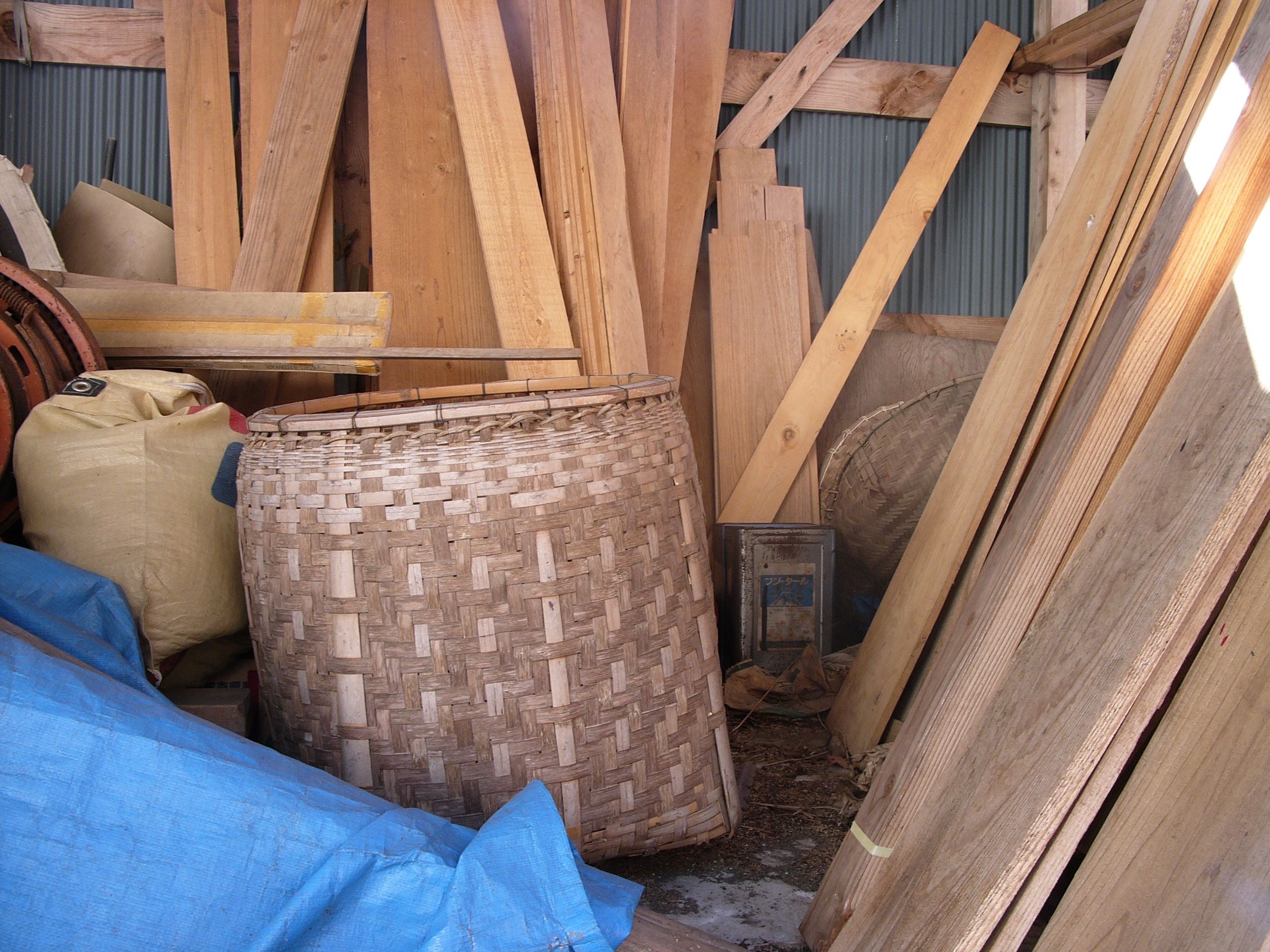
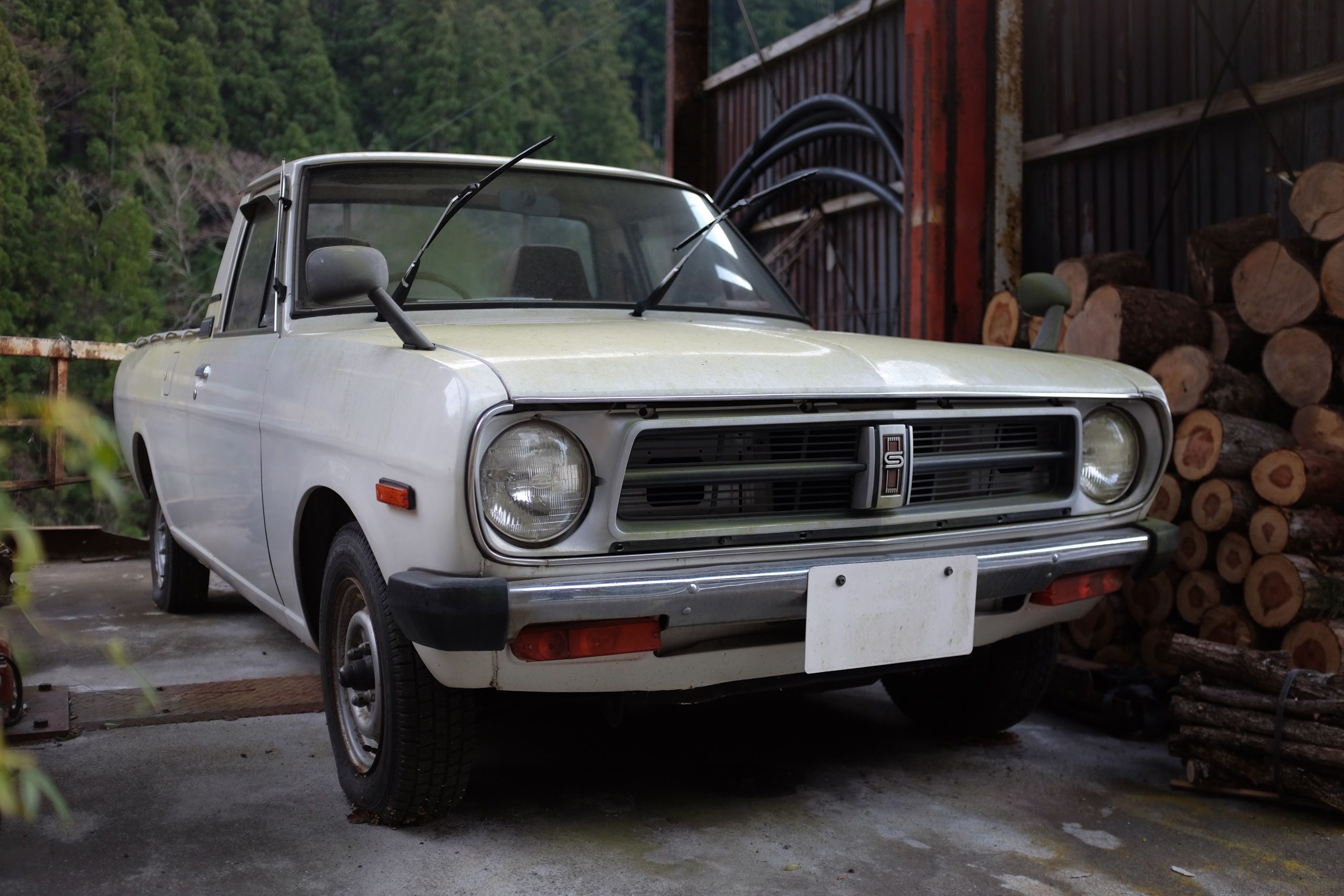
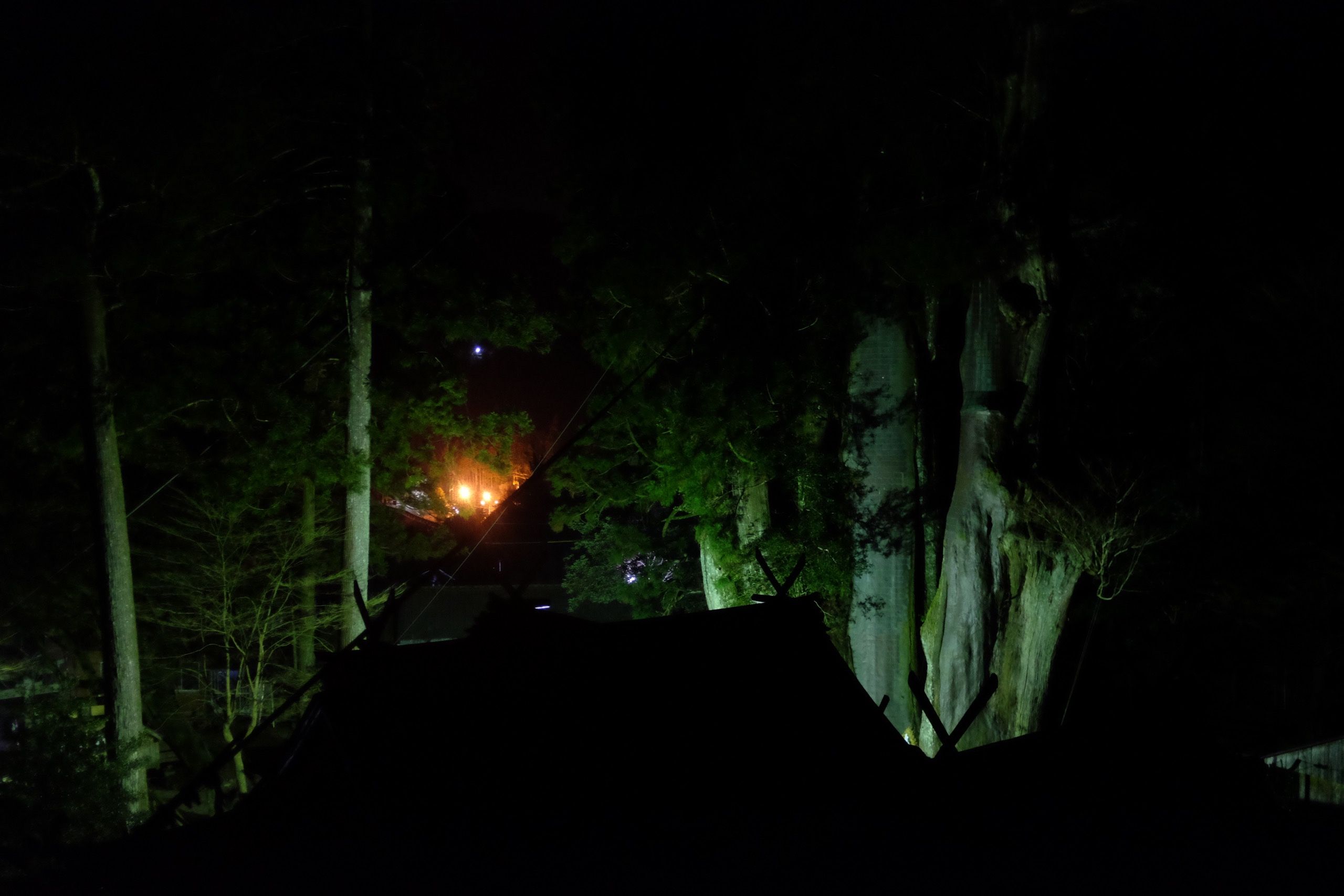
We parted on the platform of Toyonaga Station with a hug to shatter osteoporotic bones, and I watched Gyula disappear into the darkness, back to the parallel world of modern Japan. I walked into the night on old roads I knew well from two years ago, retracing my footsteps along the railway tracks which led to Kōchi. The silence and the darkness would be shattered by empty, white-lit trains, and the night would close behind them like the surface of the ocean in the wake of a cruise ship, and I walked on. I walked without thoughts and without words, and when I could walk no more I fell asleep under cedars older than Alexander, older than Darius, gods watching the parallel world, silent.
Shikoku Field Diary was written on the 500-kilometer walk across Shikoku in January and February 2019 that became the subject of The Wilds of Shikoku, my first book.
Additional photography and drone footage on this page by Gyula Simonyi.
